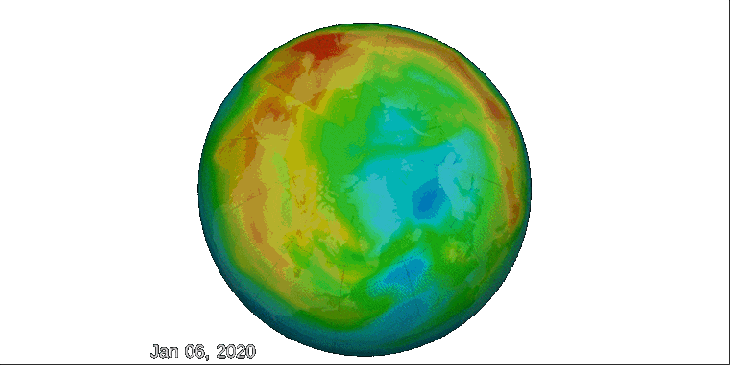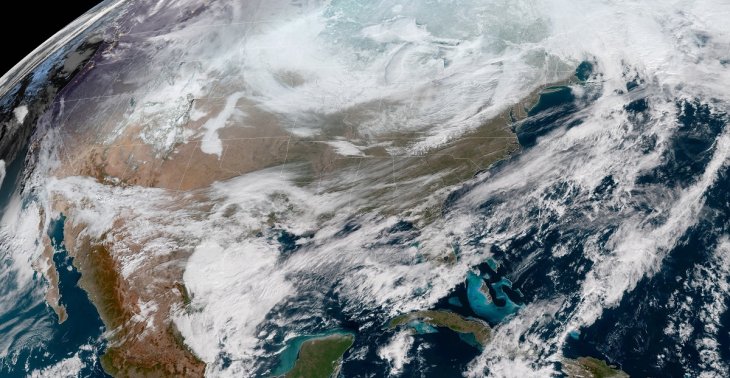The Largest Ozone Layer Hole Over The Arctic Has Finally Been Fixed
Harin - Apr 28, 2020

Scientists have recently confirmed that the largest ozone layer hole covering 1 million square km above the Arctic has finally been fixed.
- The Earth Is At Its Hottest It Has Ever Been In At Least 12,000 Years
- Researchers Make Lighter & Biodegradable Drones With Pineapple Leaves
- When Will Earth Lose All Of Its Energy And Cool Off?
Earth can heal itself from any damaging change even with or without the COVID-19 lockdown that is happening across the world.
Scientists have recently confirmed that the largest ozone layer hole covering 1 million square km above the Arctic has finally been fixed.

The rare hole was discovered earlier this month and was said to a result of the north pole’s low temperatures. If the record-breaking hole somehow managed to travel south, it would have badly affected the humans.
Copernicus Climate Change Service (C3S) and Copernicus Atmosphere Monitoring Service under the European Commission have confirmed that the hole has healed itself. On its agency, the agency explains why this is possible.
It is worth noting that the healing of the ozone layer hole has no connection to the reduction in pollution and the COVID-19 lockdown. Rather, it is a result of the polar vortex that brings to the polar regions cold air.
According to Copernicus ECMWF, this year’s polar vortex was extremely powerful. As a result, stratospheric clouds were generated. These clouds then reacted with CFC gases, causing a hole in the ozone layer.
But everything has returned to its normal state in the polar region after the polar vortex weakened. Copernicus ECMWF also predicts that the polar vortex will form again; however, the effect it has on the ozone layer might not be as much.

Such ozone layer holes are commonly found above the Antarctic from July to September. This is because naturally around this time, the stratosphere is much colder.
The largest-ever ozone layer hole was the result of a powerful polar vortex and a concentration of ozone-depleting chemicals.
>>> Ozone Layer Hole 96 Times The Size Of Taj Mahal Appears Over The Arctic, Increasing Cancer And Blindness Risks
Featured Stories

Features - Jul 01, 2025
What Are The Fastest Passenger Vehicles Ever Created?

Features - Jun 25, 2025
Japan Hydrogen Breakthrough: Scientists Crack the Clean Energy Code with...

ICT News - Jun 25, 2025
AI Intimidation Tactics: CEOs Turn Flawed Technology Into Employee Fear Machine

Review - Jun 25, 2025
Windows 11 Problems: Is Microsoft's "Best" OS Actually Getting Worse?

Features - Jun 22, 2025
Telegram Founder Pavel Durov Plans to Split $14 Billion Fortune Among 106 Children

ICT News - Jun 22, 2025
Neuralink Telepathy Chip Enables Quadriplegic Rob Greiner to Control Games with...

Features - Jun 21, 2025
This Over $100 Bottle Has Nothing But Fresh Air Inside

Features - Jun 18, 2025
Best Mobile VPN Apps for Gaming 2025: Complete Guide

Features - Jun 18, 2025
A Math Formula Tells Us How Long Everything Will Live

Features - Jun 16, 2025
Comments
Sort by Newest | Popular